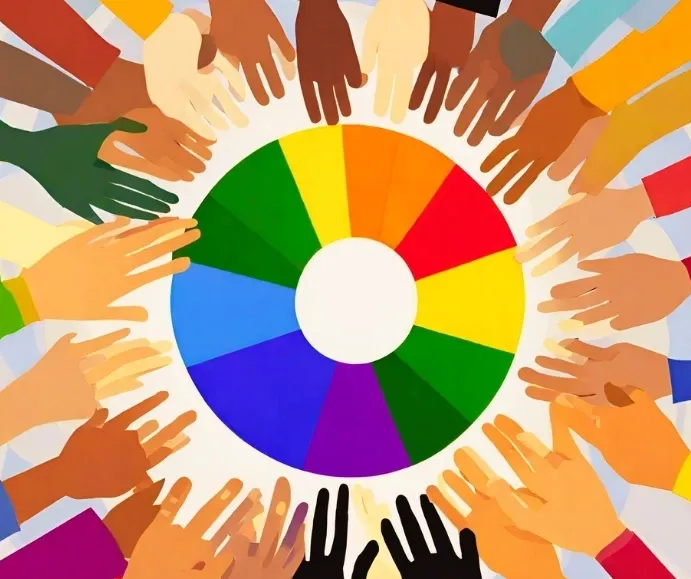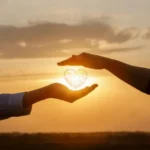In a world filled with diverse expressions of love and identity, understanding the LGBTQIA+ spectrum is essential for creating a more inclusive, empathetic, and accepting society. This blog is to foster awareness and promote a deeper understanding of the diverse range of sexual orientations and gender identities that make up the LGBTQIA+ community. In 2018, …
In a world filled with diverse expressions of love and identity, understanding the LGBTQIA+ spectrum is essential for creating a more inclusive, empathetic, and accepting society. This blog is to foster awareness and promote a deeper understanding of the diverse range of sexual orientations and gender identities that make up the LGBTQIA+ community. In 2018, India took a historic leap towards LGBTQIA+ inclusivity by decriminalizing consensual same-sex relationships. This monumental overturning of Section 377 of the Indian Penal Code marked a milestone in recognizing and respecting the rights of LGBTQIA+ individuals. However, there is still a long road ahead for complete social equality.
Before we dive in to understand the acronym, let’s first understand that LGBTQIA+ is often used to refer to anyone who is non-heterosexual(A heterosexual individual is one who finds the opposite sex to be sexually or romantically attractive.) or non-cisgender (Cisgender is a person whose gender identity corresponds with the sex, the person had or was identified as having at the birth). A clear distinction between the sexuality and gender identity needs to be understood. An easy way to understand it is “sexual orientation is who you go to bed with; gender identity is who you to go to bed as” – Lara Louise
The LGBTQIA+ Acronym: Let’s start with the basics. The acronym stands for Lesbian, Gay, Bisexual, Transgender, Queer/Questioning, Intersex, Asexual, Ally and the ‘+’ represents a space for other identities including 2-spirits, Ally. It’s a way to encapsulate the incredible diversity of human experiences.
Lesbian (L): The term reflects sexual orientation. Lesbians are women who are romantically, emotionally, and/or sexually attracted to other women. This term is exclusively used for women. The term originated from Lesbos, an island in the Aegean where Sappho, a poet who lived around 600 BCE, wrote intriguing stories of romantic interactions between women.
Gay (G): Similar to above, it also reflects sexual orientation of a person. Gay refers to men who are attracted romantically, emotionally, and/or sexually to other men. However, it’s important to note that the term “gay” is also used more broadly to describe same-sex attraction. The 12th century saw the introduction of the word “gay” from Old French “gai”. The word’s meaning in early English (1890s) was “joyful,” “carefree,” “bright and showy,” and its usage was highly widespread in speech and literature. However, during 1960s ‘Gay’ started to refer to the community, behaviors, and traditions connected with homosexuality.
Bisexual (B): Bisexual individuals are attracted to people of both their own gender and other gender. Sometimes even they are not taken seriously by both heterosexual or even gay people, they get to hear “it will pass, gradually you will be gay/lesbian/straight”
Transgender (T): Transgender relates to or having a different gender identification from the culturally prescribed gender roles for one’s birth sex (i.e., the biological sex they were born with) or for their sex as they were medically assigned at birth. Thus, people’s gender identity differs from the sex assigned to them at birth. It’s about who they are, not who they are attracted to. There should be no confusion between these identities and sexual orientation. A 2015 study by the University of Washington found trans children as young as five identify with their gender identity as quickly and consistently as cisgender kids.
Queer/Questioning (Q): “Queer” is a term that some individuals use to describe their sexual orientation, particularly when it doesn’t fit traditional labels. It’s also an umbrella term for the entire community. “Questioning” is when someone is unsure about their sexual orientation or gender identity and is in the process of self-discovery.
Intersex (I): Intersex individuals are born with physical or genetic traits that don’t align with typical definitions of male or female. The individual exhibits sexual characteristics of both sexes. They may have a combination of biological characteristics.
Asexual/Aromantic (A): Asexual individuals typically do not experience sexual attraction to others. Asexuality is a valid and meaningful part of human sexuality. Asexuality is distinct from celibacy and refraining from sexual activity, which are behavioral choices typically influenced by a personal, social, or religious beliefs.
Pansexual: Pansexuality is the attraction to individuals of any gender, or to individuals regardless of their sex or gender identity. People who identify as pansexual may describe themselves as gender-blind, claiming that neither gender nor sex determines whether they are attracted to someone romantically or sexually.
Non-Binary: The phrase “non-binary” refers to people whose gender identity does not fit neatly into the categories of “man” or “woman.” This can be a person who, regardless of the gender assigned at birth, does not entirely identify as male or female. People who identify as neither exclusively male nor exclusively female use a number of terminologies to define their gender identity, such as non-binary or genderqueer.
Ally (A): An ally is a person who supports, educates themselves about LGBTQIA+, speaks out for, and/or supports the LGBTQIA+ community.
The ‘+’ Sign: The ‘+’ sign at the end of the acronym is inclusive and signifies space for identities that aren’t explicitly covered. It embraces the fluidity and diversity of human identities.
Why Understanding Matters: Understanding the LGBTQIA+ spectrum is more than just knowing the terms; it’s about building a more inclusive society. Here’s why it’s crucial:
1. Respect for Diversity: Recognizing and respecting diverse identities and orientations fosters a culture of acceptance and inclusion.
2. Mental Health: Awareness helps combat the stigma and discrimination that can negatively affect the mental health and well-being of LGBTQIA+ individuals.
3. Allyship: Becoming an ally means standing up for the rights and dignity of the LGBTQIA+ community. It’s about offering support and working toward a more equitable society.
4. Legal and Social Change: Awareness fuels social and legal change. It’s through awareness and understanding that progress is made.
5. Personal Growth: Learning about LGBTQIA+ identities and experiences can be a journey of personal growth, opening your mind to new perspectives and empathy.
In conclusion, understanding the LGBTQIA+ spectrum is a critical step in building a more inclusive and empathetic society. It’s about respecting and celebrating the beautiful diversity of human identities and orientations. As you continue on your journey, engage in open, respectful conversations, listen to LGBTQIA+ individuals’ experiences, and offer your support and kindness. Together, we can create a world where everyone, regardless of their sexual orientation or gender identity, can live authentically and with pride.






